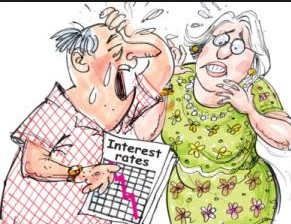Stephen S. Rach writes: In what could well be a final act of desperation, central banks are abdicating effective control of the economies they have been entrusted to manage. First came zero interest rates, then quantitative easing, and now negative interest rates – one futile attempt begetting another. Just as the first two gambits failed to gain meaningful economic traction in chronically weak recoveries, the shift to negative rates will only compound the risks of financial instability and set the stage for the next crisis.
The adoption of negative interest rates – initially launched in Europe in 2014 and now embraced in Japan – represents a major turning point for central banking. Previously, emphasis had been placed on boosting aggregate demand – primarily by lowering the cost of borrowing, but also by spurring wealth effects from appreciating financial assets. But now, by imposing penalties on excess reserves left on deposit with central banks, negative interest rates drive stimulus through the supply side of the credit equation – in effect, urging banks to make new loans regardless of the demand for such funds.
This misses the essence of what is ailing a post-crisis world. As Nomura economist Richard Koo has argued about Japan, the focus should be on the demand side of crisis-battered economies, where growth is impaired by a debt-rejection syndrome that invariably takes hold in the aftermath of a “balance sheet recession.”
Such impairment is global in scope. It’s not just Japan, where the purportedly powerful impetus of Abenomics has failed to dislodge a struggling economy from 24 years of 0.8% inflation-adjusted GDP growth. It’s also the US, where consumer demand – the epicenter of America’s Great Recession – remains stuck in an eight-year quagmire of just 1.5% average real growth. Even worse is the eurozone, where real GDP growth has averaged just 0.1% over the 2008-2015 period.
All of this speaks to the impotence of central banks to jump-start aggregate demand in balance-sheet-constrained economies that have fallen into 1930s-style “liquidity traps.”
This could be the greatest failure of modern central banking. Yet denial runs deep. Former Federal Reserve Chair Alan Greenspan’s “mission accomplished” speech in early 2004 is an important case in point. Greenspan took credit for using super-easy monetary policy to clean up the mess after the dot-com bubble burst in 2000, while insisting that the Fed should feel vindicated for not leaning against the speculative madness of the late 1990s.
That left Greenspan’s successor on a very slippery slope.
European Central Bank President Mario Draghi’s famous 2012 promise to do “whatever it takes” to defend the euro took the ECB down the same path – first zero interest rates, then quantitative easing, now negative policy rates.
Most major central banks are clinging to the false belief that there is no difference between the efficacy of the conventional tactics of monetary policy and unconventional tools such as quantitative easing and negative interest rates.
Therein lies the problem. In the era of conventional monetary policy, transmission channels were largely confined to borrowing costs and their associated impacts on credit-sensitive sectors of real economies, such as homebuilding, motor vehicles, and business capital spending.
As those sectors rose and fell in response to shifts in benchmark interest rates, repercussions throughout the system (so-called multiplier effects) were often reinforced by real and psychological gains in asset markets (wealth effects).
Two serious complications have arisen from this approach. The first is that central banks have ignored the risks of financial instability.
Second, politicians, drawing false comfort from frothy asset markets, were less inclined to opt for fiscal stimulus – effectively closing off the only realistic escape route from a liquidity trap.
The shift to negative interest rates is all the more problematic. Given persistent sluggish aggregate demand worldwide, a new set of risks is introduced by penalizing banks for not making new loans. This is the functional equivalent of promoting another surge of “zombie lending” – the uneconomic loans made to insolvent Japanese borrowers in the 1990s. Central banking, having lost its way, is in crisis. Can the world economy be far behind?

